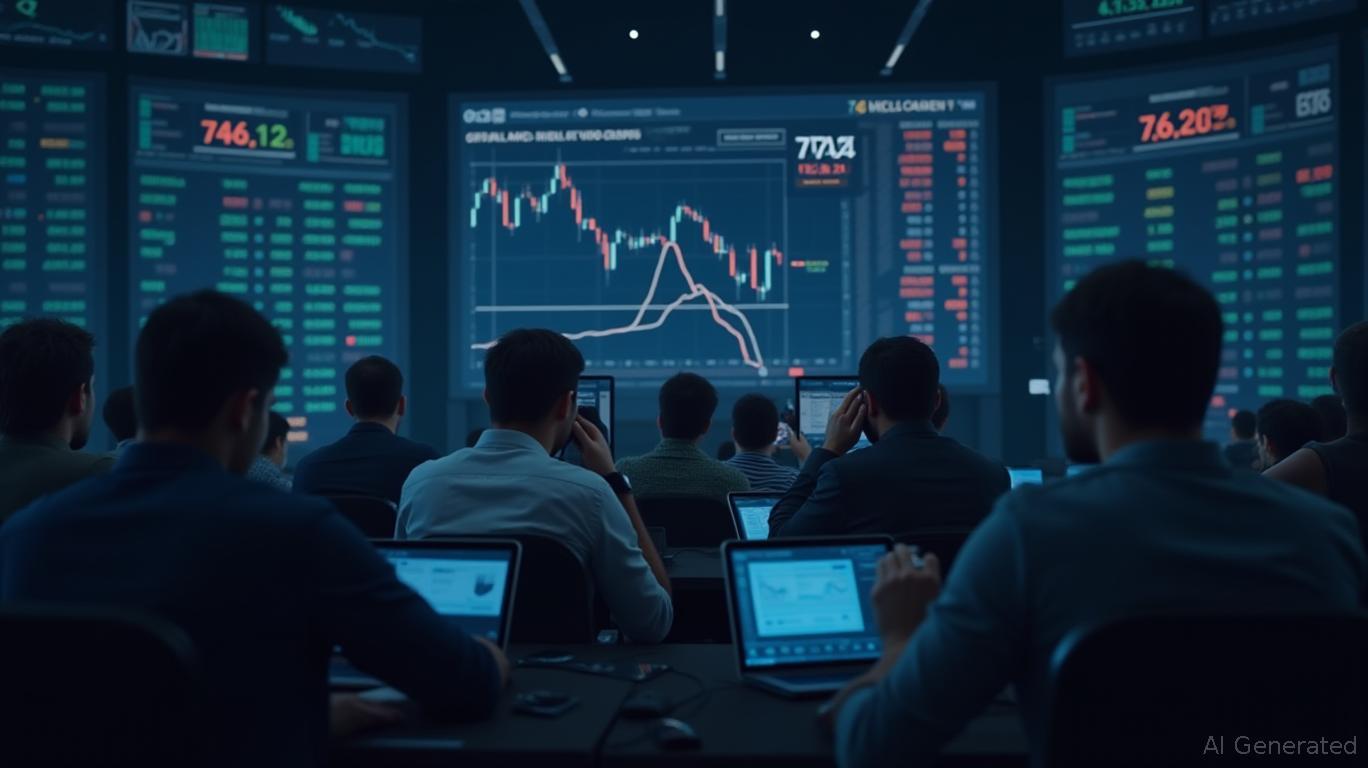AInvest Newsletter
Daily stocks & crypto headlines, free to your inbox
The Crypto Fear & Greed Index, a tool designed to gauge the collective mood of the cryptocurrency market, has reached 71 as of June 10, indicating a strong sentiment of greed among investors. This index, developed by Alternative, provides a snapshot of market emotions by compiling various data points into a single number between 0 and 100. A score closer to 0 signifies extreme fear, often seen during market crashes or periods of uncertainty, while a score closer to 100 indicates extreme greed, typically associated with strong bull runs or speculative bubbles.
When the index climbs into the ‘Greed’ zone, typically above 50, it suggests that investors are becoming more optimistic and are more willing to buy assets, even at higher prices. A reading of 71 is firmly within the ‘Greed’ territory, indicating strong positive crypto market sentiment. This means investors are likely feeling confident, buying pressure may be increasing, and there’s a higher potential for the market to be overheated. While a high index score isn’t a guaranteed sell signal, it serves as a yellow flag, reminding investors to assess their positions and risk tolerance.
The Crypto Fear & Greed Index is not based on a single metric. It aggregates data from six different sources, each weighted differently to reflect its perceived impact on crypto market sentiment. These components include volatility, market momentum, social media sentiment, surveys, Bitcoin dominance, and
Trends. Understanding these components provides deeper insight into the index’s reading. For instance, high volatility often indicates a fearful market, while high buying volume in a positive market is a sign of greed. Social media sentiment and Google Trends also play a significant role in gauging public mood and search interest related to cryptocurrencies.Bitcoin dominance, which measures Bitcoin’s share of the total cryptocurrency market cap, is another key factor. When the market is uncertain or falling, investors often sell smaller altcoins and move funds back into Bitcoin, increasing its dominance. Conversely, during periods of high confidence, money flows into smaller caps, decreasing Bitcoin dominance. The index uses changes in dominance as a sentiment indicator. Crypto volatility, another key piece, is measured by sudden, large price movements. Sharp drops increase fear, while parabolic rises often fuel greed.
Given the index is at 71, signaling greed, investors should exercise caution. A high ‘Greed’ score suggests the market might be getting ahead of itself. Consider taking some profits, reducing exposure, or tightening stop-loss orders. Avoiding FOMO (Fear Of Missing Out) is crucial, as the ‘Greed’ zone is where this phenomenon is rampant. Stick to your investment plan and look for divergences by comparing the index’s reading with other technical or fundamental analysis. Historically, extended periods in the ‘Extreme Greed’ zone have often preceded market pullbacks, so be mentally prepared for this possibility.
While the Crypto Fear & Greed Index is a useful tool, it isn’t perfect and shouldn’t be your sole decision-making factor. Challenges include its heavy weighting towards Bitcoin, potentially not fully reflecting sentiment for altcoins, and the subjective weighting of factors determined by the creators. Market dynamics are constantly evolving, and the correlation between these factors and future price movements isn’t always consistent. Sentiment can change very quickly, so use the index as one data point among many in your analysis.
The rise of the Crypto Fear Greed Index to 71 and its position in the ‘Greed’ zone tells us that optimism is currently high in the market. This positive crypto market sentiment is driven by factors like momentum, social media buzz, and how Bitcoin dominance and crypto volatility are playing out. While this indicates a strong market environment, it also serves as a crucial reminder to stay disciplined, avoid impulsive decisions driven by FOMO, and be prepared for potential shifts. By understanding the components and implications of the index, investors can gain a better perspective on the market’s emotional state and make more informed decisions.

Quickly understand the history and background of various well-known coins

Dec.02 2025

Dec.02 2025

Dec.02 2025

Dec.02 2025

Dec.02 2025
Daily stocks & crypto headlines, free to your inbox
Comments
No comments yet